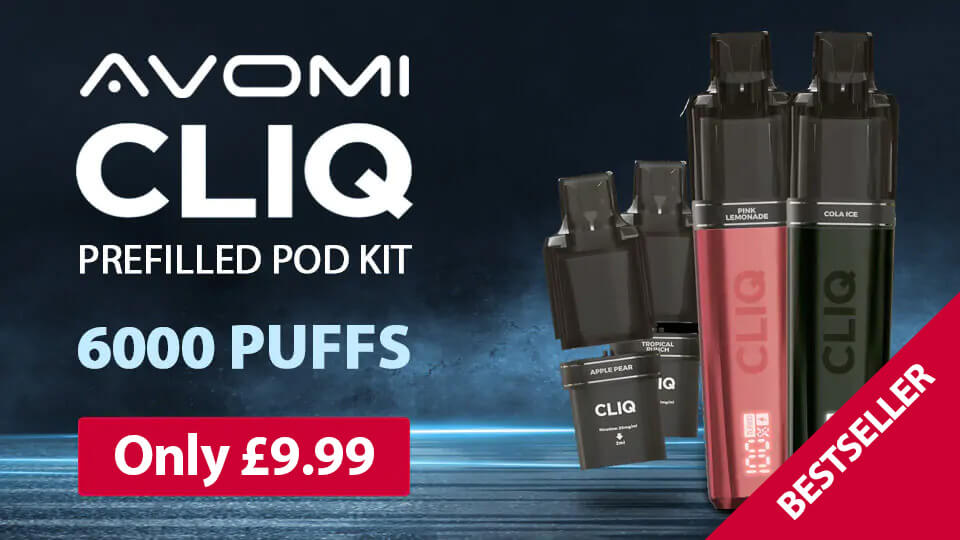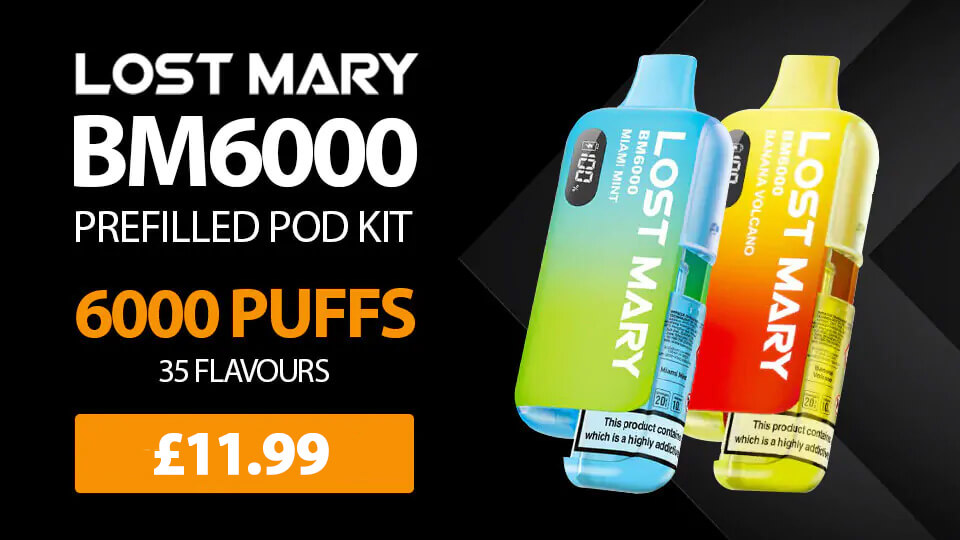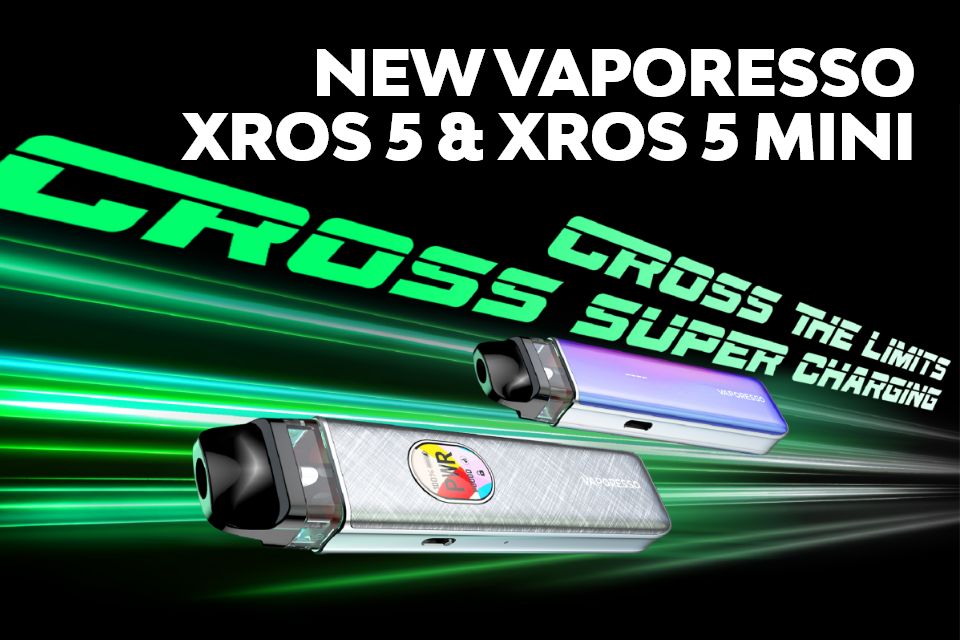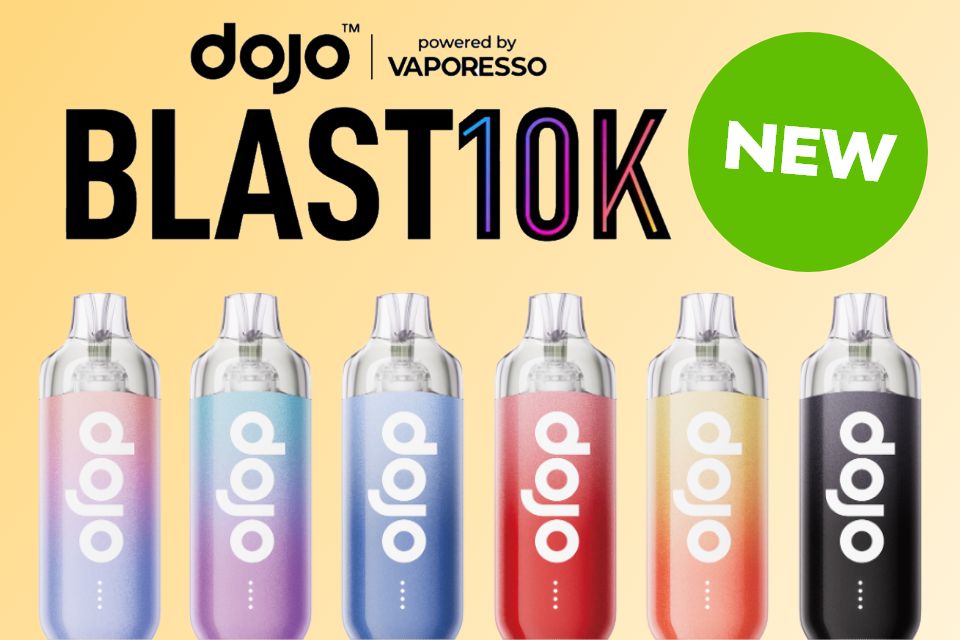Get 15% off your first order - use code VV15
Checkout using your account
Checkout as a new customer
Creating an account has many benefits:
- See order and shipping status
- Track order history
- Check out faster
Vape Coils
Genuine Replacement Coils
Genuine replacement vape coils are essential to maintaining a high-quality vape experience. Replacement vape coils from top brands for a wide range of popular vape tanks and vape pods. Shop our full range of replacement coils, including kenthal, mesh, and ceramic suitable for Sub Ohm Direct to Lung or Mouth to Lung vaping styles. With resistances ranging from 0.1 to 2.0 Ohm, depending on your tank or pod, we have coils for the best vaping experience.
What is a Vaping Coil?
A vaping coil is a small metal device that encases a heating element and a wick, this wicking material is usually made from organic cotton. The wick absorbs the e-liquid, and when the heating element is powered, air drawn over the coil produces vapour. This process delivers intense flavour and nicotine for a satisfying vape experience. Vape coils are designed to handle repeated heating throughout the day, but over time the cotton can burn, reducing flavour or causing the device to produce less vapour.
Your Video Guide to Vape Coils



Vape Coil FAQs
How to choose the right coil
The following table offers recommendations for the various coil types best suited to the different e-liquids including recommendations for the more popular vape kits.
| E-liquid VG/PG | Freebase 50/50 | Nic Salts 50/50 | High VG 70% Plus | High PG Above 50% |
| Coil Type | Standard or mesh coils (MTL/RDL) | MTL coils (including dual mesh) | Sub-Ohm DL Coils | MTL Coils |
| Coil Material | Kanthal, Stainless Steel, or Nichrome | Kanthal or Ceramic | Mesh or Kanthal | Kanthal or Stainless |
| Wattage | 10W – 30W | 10W – 20W | 40W - 100W | 8W - 15W |
| Resistance Ω | 0.6Ω - 1.2Ω | 1.0Ω - 1.8Ω | 0.15Ω - 0.5Ω | 1.0Ω - 2.0Ω |
| Reason | Balanced e-liquids work well with coils that can handle moderate vapour production without sacrificing flavour. Mesh coils in this range provide a smooth hit with enhanced flavour. | Nic salts require lower wattage and higher-resistance coils to prevent harsh throat hits while delivering a satisfying nicotine dose. Ceramic coils are great for longevity and flavour purity. | Mesh coils provide a larger surface area, allowing for even heating and efficient wicking of thicker high VG liquids, resulting in denser vapour and richer flavour. | High PG e-liquids are thinner and are best used with higher-resistance coils, providing a stronger throat hit and more intense flavour. |
| Examples | Aspire Nautilus BVC Coil (1.0Ω, 14W max) Uwell Caliburn G Coil (0.8Ω, 18W max) | Vaporesso CCELL Ceramic Coil (1.3Ω, 13W max) Uwell Caliburn A2 Pod Coil (1.0Ω, 15W max) | Smok TFV16 Mesh Coil (0.17Ω, 120W max) Vaporesso GT Mesh Coil (0.18Ω, 85W max) | Innokin Zenith Coil (1.6Ω, 14W max) |
When to Change Your Vape Coil
Replacement coils should be changed every 1–2 weeks to maintain optimum flavour and performance, depending on your vaping style. Frequent vapers may need to replace coils more often, while occasional vapers may find coils last longer. Signs that your coil needs replacing include muted flavours, reduced vapour production, or an altered throat hit. Most vape kits have simple coil replacement methods outlined in the user manual. When installing a new coil, remember to prime it by dripping e-liquid directly onto the cotton holes.
Are There Different Types of Coils?
Yes. Each vaping device supports specific coil resistances, and some advanced kits are compatible with a range of coils, allowing vapers to experiment with different vaping styles. Starter kits usually come with higher resistance coils around 1.0 ohms, which are ideal for mtl mouth to lung vaping with standard PG/VG e-liquids. Coils with lower resistances, often below 1.0 ohms, are suited for sub-ohm DTL vaping and high VG e-liquids. These lower resistance coils have larger juice holes, enhancing vapour production and delivering intense flavour.
Choosing the Right Resistance and Wattage
The coil resistance (measured in ohm) and power settings of your vaping device are key to a good vape experience:
Higher resistance coils (≥1.0 ohms): Best for mouth to lung vaping and moderate VG liquids. Start at lower wattages (10–20W) for consistent flavour with less vapour.
Lower resistance or sub-ohm coils (<1.0 ohms): Ideal for DTL vaping and high VG e-liquids. Use higher wattages (40–60W) to achieve denser clouds and more intense flavour.
Always consult your vape kit manual for the recommended wattage range to prevent coil burn-out and maintain coil lifespan.
Mesh Coils
Mesh coils are a type of heating element used in vaping devices. Unlike traditional round wire coils, mesh coils are made of a finely woven mesh material, usually stainless steel or Kanthal, that resembles a small grid or mesh screen. The mesh design offers several advantages over traditional coils:
- Increased Surface Area: Mesh coils have a larger surface area compared to round wire coils. This increased surface area allows for more even heat distribution and faster ramp-up times, resulting in quicker vapour production.
- Improved Flavour: The larger surface area of mesh coils enhances the contact between the heating element and the e-liquid. This improved contact helps to produce more intense and accurate flavour profiles from your e-juice.
- Consistent Heating: Mesh coils provide a uniform heating experience across the entire surface area. This uniform heating helps to eliminate hot spots and provides a smoother and more consistent vape.
- Longer Lifespan: Due to the larger surface area and even heat distribution, mesh coils tend to last longer than traditional ones. They often require less power to achieve satisfying vapour production, which can reduce stress on the coil and prolong its lifespan.
- Increased Vapour Production: The increased surface area and faster heating of mesh coils allow for larger vapour production. This makes mesh coils particularly popular among cloud chasers and vapers who enjoy denser clouds.
Mesh coils have gained popularity in the vaping community for their ability to deliver enhanced flavour, smoother hits, and increased vapour production. They can be found in various types of vaping devices, including sub-Ohm tanks, rebuildable atomizers (RDAs/RTAs), and pod systems.
Important note: If you're unsure which coils you can use, consult your manual. All the kits we sell have details about the coils supplied with the device so you can judge if it will be suitable for the type of liquid and vaping style that you prefer.
Best Coils for Sub-Ohm Vaping
Popular coil types for sub-ohm vaping include:
Kanthal Coils: Kanthal is a widely used coil material known for its durability and excellent heat resistance. It provides a consistent vaping experience and is suitable for both flavour and cloud production.
Stainless Steel (SS) Coils: Stainless steel coils offer versatility as they can be used in wattage and temperature control modes. SS coils provide a clean flavour profile and can produce good vapour production.
Nickel (Ni200) Coils: Nickel coils are primarily used in temperature control mode due to their high-temperature coefficient of resistance. They offer precise temperature control and are generally used for flavour-focused vaping.
Titanium (Ti) Coils: Titanium coils are another option for temperature control mode. They offer fast ramp-up times and can provide a clean flavour profile. However, it's essential to use them carefully to prevent overheating and potential health risks.
Nichrome (Ni80) Coils: Nichrome coils heat up quickly and offer a balance between flavour and vapour production. They have a lower resistance compared to Kanthal, making them suitable for sub-Ohm vaping.
Coil resistances, power settings, and heating elements all combine to define the overall vape experience. Experimenting with different coils designed for your device and preferred e-liquid type helps you find the perfect match for your vaping style.
Common Coil Problems
Even with proper care, coils can present issues:
Burnt taste: Caused by dry or overused coils, or too high wattage.
Leaking: Occurs if coils are incompatible with the device or if e-liquids are too thin.
Gurgling or spitting: Often from overfilling or improper power settings.
Short coil lifespan: Frequent with sweet or high VG e-liquids and chain vaping.
Poor flavour: Develops as residue builds up, reducing the vaping experience.
Using the correct coil resistance, proper wattage, and compatible e-liquids will reduce these problems and prolong coil life.








